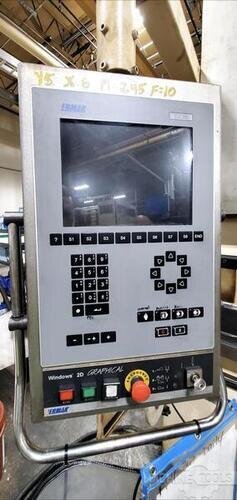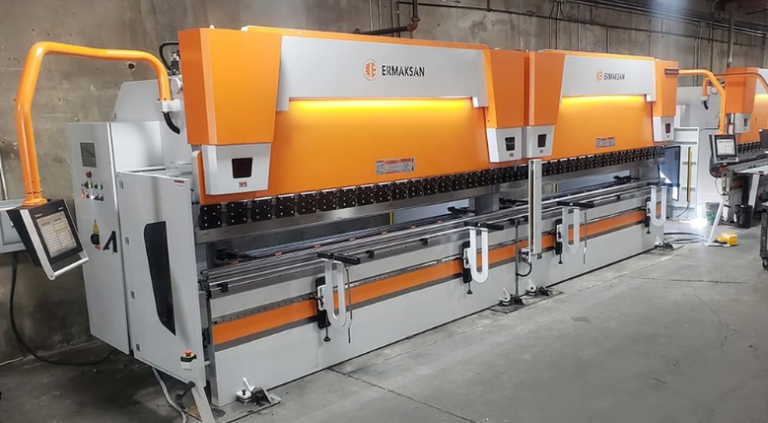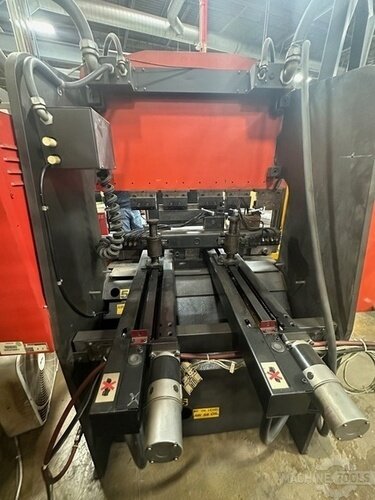I’ve always been passionate about helping customers navigate and implement advanced fabrication solutions. My journey at Mac-Tech began with a drive to ensure that businesses get the most out of their equipment investments. Over time, I’ve watched beam coping evolve, especially with the introduction of robotics and automation, and I find it incredibly rewarding to guide others through these technological advancements.
My perspective is shaped by the hundreds of site visits and customer problem-solving sessions I’ve conducted. Each project brings unique challenges, and I strive to be not just a salesperson, but a trusted partner who helps clients improve productivity, reduce costs, and ultimately increase profitability throughout their beam coping and fabrication processes.
My Consultative Role in Shaping Beam Coping’s Future
I’ve seen firsthand how beam coping has changed with the integration of CNC and robotics. Rather than selling a one-size-fits-all solution, I focus on understanding each client’s workflow, production demands, and long-term goals. It’s my job to dive into the specifics of their application—whether it involves straightforward cuts or more intricate structural steel operations—before proposing a path forward.
Consulting in beam coping means bringing together expertise in complementary equipment, including flat and tube lasers, press brakes, and tube bending systems. My background in these areas allows me to offer a comprehensive perspective that streamlines multiple aspects of production. This broader approach ensures that any beam coping solution naturally fits within a client’s overall fabrication process.
My role extends beyond simply recommending the right tool. I collect and analyze feedback from our customers, sharing their insights with our team to guide further innovations. This collaborative process means that everybody benefits from each new installation, and we continuously refine how robotics and automation can be leveraged in beam coping applications.
Fostering Partnerships for Long-Term Success
Building strong, long-lasting relationships with my customers is essential. I make it a priority to visit client facilities on a regular basis, understanding their changing production landscapes and offering advice on maintenance, upgrades, or expansions before problems arise. This sense of partnership often leads to creative solutions that save both time and money in the long run.
Keeping communication lines open is a major part of my consultative approach. By working closely with manufacturing teams, shop foremen, and support staff, I can spot opportunities for expanded automation or more effective equipment coordination. This boots-on-the-ground perspective helps me address concerns quickly and recommend timely adjustments that keep operations on track.
Providing ongoing technical support is also a key aspect of my role. When customers invest in advanced technology such as robotic beam coping lines, tube lasers, or press brakes, they deserve ongoing training and service to maximize uptime. My goal is to become the person they rely on when they need answers, strategic guidance, or just a fresh perspective on a challenging project.
Aligning Solutions with Evolving Customer Needs
Changes in material types, tightening lead times, and shifting market demands require consistent adaptation. I make it a point to stay informed about the latest software updates and mechanical advancements, ensuring my customers’ systems remain relevant and competitive. We often look for ways to incorporate new technology before it becomes a necessity, enabling smooth transitions in production.
Balancing current demands with potential future needs calls for careful assessment. I start by analyzing the volume of work, types of materials, and the level of precision required. With that information, I tailor a solution that addresses immediate requirements but also allows for growth—whether that means additional laser capacity or a fully automated beam coping line.
Reviewing performance and ROI is an ongoing process. After a new system is installed, I follow up regularly to fine-tune settings, share optimization tips, and suggest ways to integrate complementary equipment. This iterative approach ensures continuous improvement in production efficiency and helps my clients maintain a competitive edge for years to come.
AFD Plate Drilling Machines
Harnessing Automation to Enhance Beam Coping Efficiency
Automation in beam coping can seem daunting, but I aim to demystify the process. By breaking down how robotic systems work—from loading the beam to executing cuts and offloading parts—I help clients visualize exactly how automation will fit into their workflow. This transparency builds confidence, and I’m always there to field questions during implementation and beyond.
Advanced solutions like beam line robotic coping drive significant efficiency gains by minimizing manual operations. They also reduce the chance of human error, leading to more consistent and repeatable results. I’ve lost count of how many times I’ve witnessed a client’s amazement when they see the difference in speed and accuracy that automation brings.
Using my background in lasers, press brakes, and tube bending, I guide customers in optimizing their entire fabrication process around these automated coping lines. Clients often discover new ways to leverage their machinery for different applications once they realize the scope of what automation can accomplish. That sense of discovery and growth is what excites me most about this field.
FAQ Section
How do I know if robotic beam coping is right for my facility?
I recommend a thorough assessment of your production volume, job complexity, and desired tolerances. I can help review these factors and determine if robotic beam coping delivers a strong return on investment.
What sort of training and support do you provide?
I’m here to guide you through every phase, from initial installation to ongoing operation. Our training covers maintenance procedures, software usage, and best practices to ensure your team is confident and efficient.
Can you also advise on laser and press brake technology?
Absolutely. My role encompasses all major fabrication equipment, and I’m happy to discuss how lasers and press brakes integrate with or complement your beam coping solution.
How do you handle customization or special parts?
We work closely with our engineering team to adapt robotic coping lines to unique materials, shapes, or processes. I’m involved in every step to ensure the final solution meets your exact requirements.
Is it difficult to transition from manual processes to automation?
It can be an adjustment at first, but my consultative approach includes step-by-step guidance, comprehensive training, and continuous support to make the transition as smooth as possible.
I enjoy helping companies discover new efficiencies. There’s a real sense of satisfaction in seeing a production line run more smoothly, producing higher-quality parts, and supporting my clients’ business growth. If you’d like to discuss how I can help you streamline your beam coping and overall fabrication process, simply reach out.
Get Weekly Mac-Tech News & Updates








